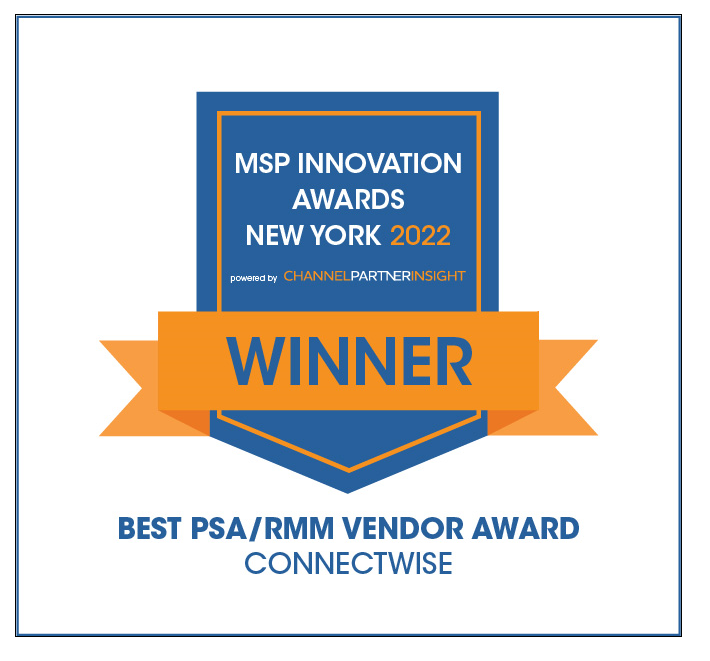Must-have network device monitoring tools for MSPs
A lot can go wrong with network devices—and even seemingly minor issues can turn into big problems over time. Servers can fail or experience a drop in performance or reliability without ongoing maintenance and updates. Devices need patching or new security settings. Failing to keep on top of these tasks can result in security vulnerabilities, unauthorized entries, active connections for devices that are no longer authorized, traffic bottlenecks, and other issues.
Failing to implement a robust network device monitoring strategy can have consequences for both you and your clients that range from minor to dire. In fact, 62% of breach victims weren’t aware that their organizations were vulnerable before the incident.
These events lead to catastrophic data loss, downtime, and a significant blow to a business’s reputation and credibility—including yours.
Network device monitoring tools can provide more comprehensive and real-time visibility into network device activities and performance, a critical part of any MSP engagement. But what tools should you be focusing on?
How network device monitoring fits into the MSP toolkit
Monitoring network devices gives you insights into the performance, usage, and security of the many devices connected to a client’s network. This task empowers you to be more proactive about identifying potential issues (such as malware, performance degradation, or security vulnerabilities) before they cause more damage or become bigger problems. Other advantages of device monitoring include:
- Less downtime. By finding and fixing problems with devices early, you can minimize the chances of a disruption that could affect your clients’ operations or lessen the impact of an incident, such as by shortening downtime duration.
- Security optimization. A pattern of vulnerabilities or other issues can help you implement stronger or more appropriate defenses for your clients.
- Resource allocation. By analyzing data on device usage and traffic patterns, you can help businesses with their network capacity planning, supporting greater efficiency and reducing unnecessary costs that can be put to better use.
- Better maintenance. Staying on top of devices that need repair or replacement supports greater productivity and can extend the life of network components.
- Asset management. Network device monitoring tools can help you track connected devices and their configuration, ensuring devices are accounted for as well as up-to-date with security patches and software versions. This can also help prevent devices that have had their authorization removed from being used to access the network.
- Centralized oversight. A single unified view for monitoring network devices, including their configurations and performance metrics, streamlines and simplifies their management, increasing efficiency and reducing administrative effort.
Encouraging your clients to add network device monitoring gives you more insight into their infrastructure, enhancing your ability to monitor their network devices in detail. It can also enhance the value of your services by empowering you to offer additional or expanded services, such as:
- Tips for network and resource optimization
- Strategic planning for network add-ons, new technologies, or upgrades
- More frequent and detailed reporting on device performance, security, and management
As an added bonus, by helping your clients create a stronger network device monitoring standard, it’s also easier to scale up your services as needed as their business grows.
Essential network device monitoring tool categories
To ensure that a network devices monitoring strategy covers the entire breadth of a network, you need to use tools across a range of categories designed to detect and monitor different types of activities. From analyzing traffic to managing asset inventory, a layered approach of different types of network device monitoring tools offers the most complete security coverage of the many different components and activities on a network.
Understanding the different types of tools for monitoring network devices, along with their features and functions, can complement or add to your network monitoring plan and help you meet growing requirements for security and optimization. Here’s a list of the major categories.
1. Endpoint management tools
Proactively monitoring the different endpoints, or individual devices in a client network, is one of the most important aspects of your role for their business. These devices can be desktops, laptops, servers, mobile phones, and other items connected to the network.
Endpoints are often some of the most vulnerable areas of a network, so endpoint management tools are valuable for their ability to detect threats in real time, enabling you to act quickly to mitigate them. However, from a scalability perspective, another benefit is how they can help introduce automation into your monitoring process. By automating processes like patch management, updates, and other general maintenance tasks, your team can save valuable time while keeping a consistent standard of service.
2. SaaS cloud backup tools
Software-as-a-Service (SaaS) backup tools are designed specifically to protect the SaaS applications and data used in the cloud. Even in the event that a given SaaS application is experiencing downtime, your clients will still have the ability to access and use any relevant data that is backed up. With network devices providing a new vulnerability vector in the cloud, backup tools help provide your clients with peace of mind and confidence in your team.
Another thing to note here is that while the individual SaaS platforms that your clients may use do have native backup capabilities, they rarely are enough to meet the client’s needs or compliance needs. SaaS backup helps ensure you aren’t married to the native platform’s backup limitations when it comes to protection.
3. Patch management tools
Device software often needs patching in between larger upgrades or updates to address security vulnerabilities. But manually updating or even managing patches on all devices on a network can be an extremely time-consuming task.
Patch management tools help with the management and deployment of these patches with automation features that simplify, streamline, and speed up the process. This ensures that all devices across a network are up-to-date and vulnerabilities or bugs have been addressed. Patches can be prioritized and deployed at specific times, such as at night or on weekends, to prevent bottlenecks or other disruptions to business operations during busy periods.
4. NOC services
Network Operations Center (NOC) services refer to services provided by an outsourced team of experts who take on the task of monitoring, supporting, and patching devices across a network.
With continuous 24/7/365 services, NOCs help your network device monitoring team save valuable time, allowing them to handle more complex or mission-critical tasks while also saving your business costs in terms of talent. The professionals on the NOC team have the specialized knowledge, experience, and expertise to monitor and manage devices and settings that your team may be using. If you combine their services with a Security Operations Center (SOC) you can even get expert proactive assistance with any cybersecurity threat that your NOC team catches.
This provides confidence that your clients are getting the highest-quality, most up-to-date network device monitoring services, including management, backup, and maintenance.
5. Risk assessment tools
These tools are designed to continuously evaluate the security risks posed by networked devices, helping to identify potential threats and weak points. This information can help you proactively shore up the security strategy for those devices.
Some common features and capabilities of risk assessment tools in the network device monitoring world include:
- Scanning databases and industry alerts to see if devices have missing patches or known vulnerabilities that could be exploited
- Analyzing device configurations for errors or vulnerabilities
- Risk scoring to help prioritize which devices or issues to focus on first
6. IT automation tools
In the context of network device monitoring, IT automation tools refer to software that takes care of various routine tasks and workflows involved in monitoring and managing network devices. With the high number of devices that may be on a network, these tools can significantly cut down the time and effort it takes to manage and monitor them. They also support scalability by providing a centralized platform that requires minimal manual intervention for routine tasks.
Some tasks related to monitoring network devices that IT automation tools can take off your plate include:
- IT asset discovery and configuration for IP addresses, security, and network settings
- Categorizing and prioritizing alerts generated by devices
- Remediation for common issues
- Performance optimization
7. SASE solutions
Secure Access Service Edge (SASE) solutions refer to an emerging framework that offers
network security and wide-area networking (WAN) capabilities in a unified cloud-based service. This concept was first introduced by Gartner in its report “The Future of Network Security is in the Cloud.” The framework is based on the idea that in an increasingly digital landscape, there is no longer a static perimeter around a central data center.
Instead of hardware, SASEs use the connective qualities of cloud technology to provide a security platform that isn’t tethered to a geographic location. Tools using SASE architecture use zero trust network architecture principles and security policies to recognize users and devices no matter where they are. In this way, they can provide faster, more seamless access and enhanced security for network devices than tools that use the traditional data center model.
7. SIEM solutions
Security Information and Event Management (SIEM) systems play a pivotal role when it comes to the security aspect of network device monitoring. SIEM systems are sophisticated tools that collect, correlate, and analyze vast volumes of security-related data generated by network devices, applications, and infrastructure components. With a SIEM system in place, MSPs can get useful insights into network activity, threats, and incidents.
One important facet of SIEM tools in an overall network device monitoring strategy is that they can be integrated with a variety of other solutions, including firewalls and SASE. SIEM offers the ability to review logs and alerts from multiple other tools all in one place. Bringing together insights from multiple sets of tools makes it possible for MSPs to mitigate risks, protect sensitive data, and maintain the integrity of their clients' networks in an ever-evolving threat landscape. In addition, SIEM is essential in making sure that your clients are compliant when it comes to any relevant regulations or requirements.
8. SOC solutions
A Security Operations Center (SOC) team is another important component of the security aspect of network device monitoring. SOC teams serve as an extension of your main cyber teams, bringing in additional expertise and capacity to service clients.
In a network device monitoring context, SOC teams are extremely useful because their 24/7 service makes it possible for them to detect, prevent, and respond to potential threats in real time. By consolidating data from diverse sources, such as network devices, firewalls, intrusion detection systems, and more, SOC teams MSPs with a comprehensive view of their clients' network security posture, without incurring excessive amounts of overhead. Along with this, SOC teams facilitate continuous monitoring, helping MSPs to maintain regulatory compliance, track network performance, and proactively identify vulnerabilities before they can be exploited.
Selecting your ideal network device monitoring solutions
Overall, network device monitoring represents a combination of security and monitoring/management needs, and this is reflecting in the tools that MSPs will use to execute. When evaluating which tools and vendors are most appropriate for your device monitoring needs, there are several features and characteristics to consider, such as:
- Multi-tenancy capabilities. You should be able to use a centralized dashboard to use any given solution for multiple clients.
- Vendor support and updates. Research the vendor’s reputation and reviews to see how they handle issues and whether they can reliably and consistently address bugs and keep software up-to-date.
- Device compatibility. Solutions should be able to seamlessly support various types of network devices, from routers to laptops, and smoothly integrate with other platforms and applications you and your clients use.
- Compliance and security. The solutions you use should meet required security standards, support secure communication protocols, and integrate robust access control.
- User-friendliness. The tool should be easy and intuitive to use and configure so you can quickly set up processes and settings.
- Integration with other systems. You should be able to integrate these tools with any other platforms you use, such as network management applications or ticketing systems.
- Scalability. Make sure tools are flexible enough to align with changing needs, whether you are adding more clients or your clients’ requirements evolve.
The ConnectWise suite of unified monitoring and management solutions features intuitive software designed to simplify and centralize your network monitoring tasks, including device monitoring, backup and disaster recovery (BCDR), and award-winning RMM. Check out our on-demand RMM demo to see first-hand how a unified solution can help your MSP deliver unmatched unified network monitoring services.


